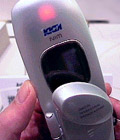DoCoMo & TI to Develop Multi-Mode UMTS
Texas Instruments Inc. and NTT DoCoMo, Inc., have announced a joint agreement to develop a cost-competitive, multi-mode UMTS (W-CDMA/ GSM/GPRS) chipset to serve the Japanese, U.S. and worldwide 3G handset market. An integrated UMTS digital baseband and applications processor will be developed based on TI’s OMAP(TM) 2 architecture and NTT DoCoMo’s W-CDMA technology for NTT DoCoMo handsets and other 3G handsets worldwide. Additionally, the agreement will include development and testing of power management, RF and protocol software that will be made available as system solutions to TI’s worldwide customer base.


